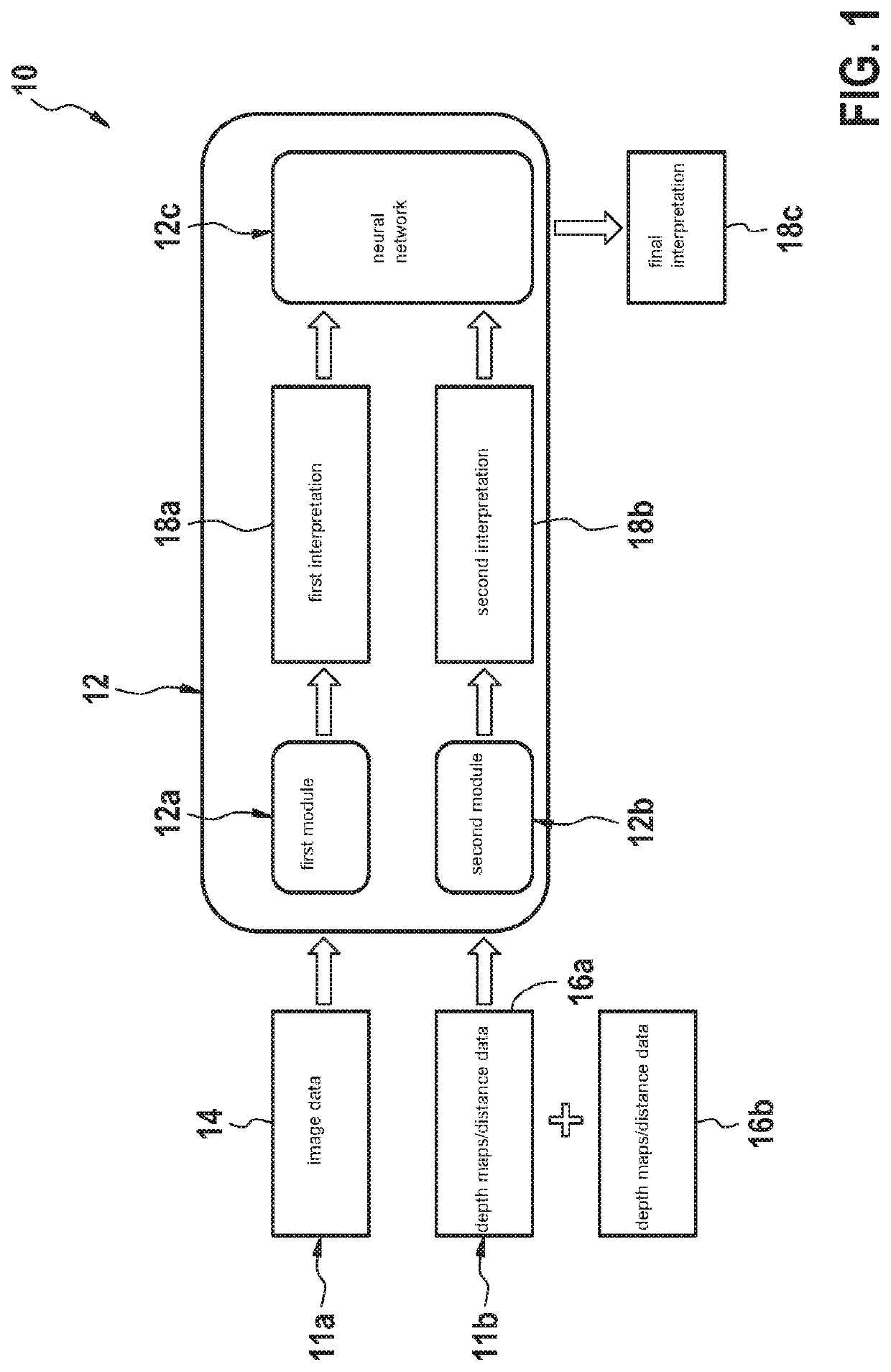Training and operating a machine learning system
a machine learning and training system technology, applied in the field of artificial intelligence, can solve the problems of not being able to reproduce the entire world and/or all scenarios in the training data, being trained into the system only with difficulty and at considerable expense, and achieves the effect of improving the training of the ml system, and reducing the cost of training
- Summary
- Abstract
- Description
- Claims
- Application Information
AI Technical Summary
Benefits of technology
Problems solved by technology
Method used
Image
Examples
Embodiment Construction
[0045]FIG. 1 shows a machine learning system 10 according to an exemplary embodiment of the present invention. In general, ML system 10 can be an artificial intelligence system 10 of any type. In particular, ML system 10 can have at least one neural network 12. Here, neural network 12 can be realized in multilayer fashion, and can be a linear, nonlinear, recurrent, and / or convolutional neural network 12. Neural network 12 can have one or more convolution layers.
[0046]ML system 10 of FIG. 1 is realized as a multipath system 10; via a first path 11a, image data 14 can be fed into system 10 as input variables or input data, and can be processed by the system. Via a second path 11b, depth maps 16a, 16b, and / or distance data 16a, 16b can be fed into system 10 and processed by it.
[0047]System 10 shown in FIG. 1 has, as an example, three modules 12a, 12b, 12c. A first module 12a is configured to process, analyze, and / or interpret image data 14 and to ascertain and / or output a first interpr...
PUM
 Login to View More
Login to View More Abstract
Description
Claims
Application Information
 Login to View More
Login to View More - R&D
- Intellectual Property
- Life Sciences
- Materials
- Tech Scout
- Unparalleled Data Quality
- Higher Quality Content
- 60% Fewer Hallucinations
Browse by: Latest US Patents, China's latest patents, Technical Efficacy Thesaurus, Application Domain, Technology Topic, Popular Technical Reports.
© 2025 PatSnap. All rights reserved.Legal|Privacy policy|Modern Slavery Act Transparency Statement|Sitemap|About US| Contact US: help@patsnap.com


